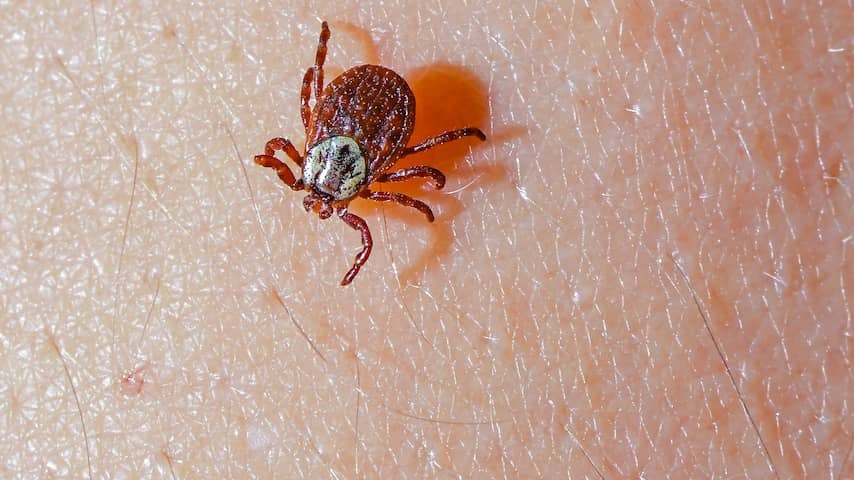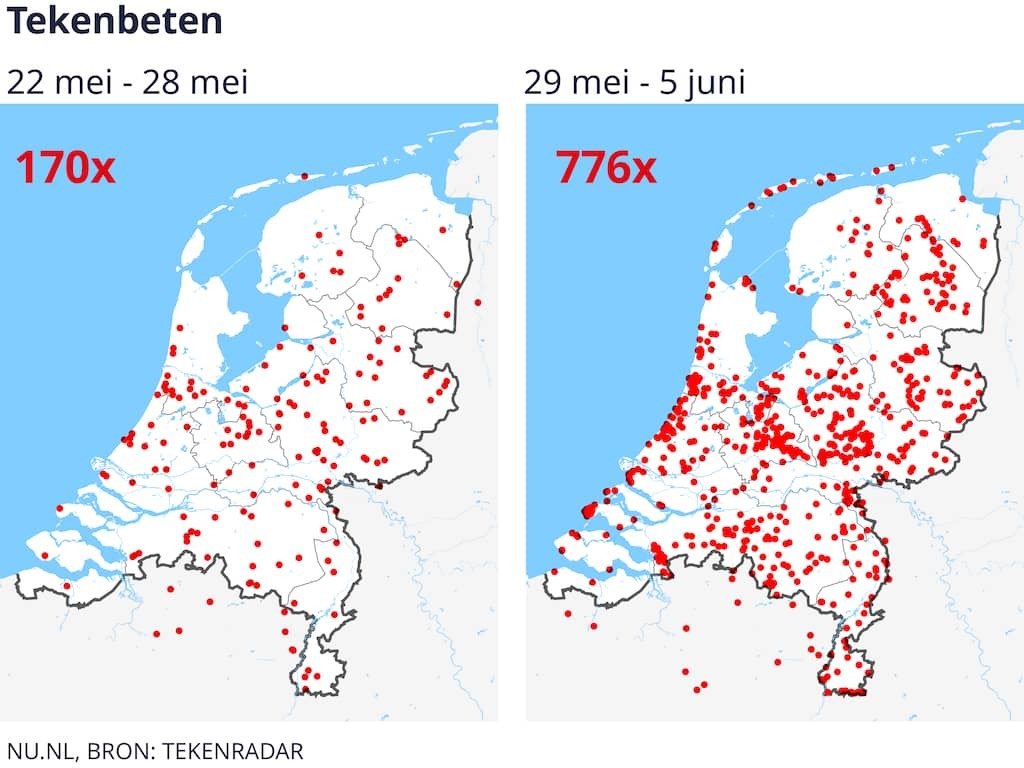
Since Ascension Day, there has been a significant increase in the number of people who say they have been bitten by a tick. The number of reports has more than quadrupled compared to the week before. The rain and outings are likely the cause of this.
Last week, 170 tick bites were reported to Tekenradar. This week, with 776, it was more than 4.5 times as many. That is striking, says Arnold van Vliet, who keeps track of the figures as a biologist. “From the beginning of May, the number of reports was rather stable than normal. But now the tick is showing itself fully.”
That is probably mainly due to the rain of the past few days. “Ticks do not like drought and retreat into the soil where it is more humid.” Before the Ascension weekend, it was a long period of extreme drought. The rain deficit rose to at least 120 milliliters.
In addition, many people went out around Ascension Day. And “when more people go into nature, the number of tick bites increases,” says Van Vliet.
“We see almost every year since 2013 a clear increase in the number of tick bite reports in the Ascension week compared to the week before,” says the biologist. But this year that increase is “significantly higher than normal.”

Tick is catching up
So a coincidental combination, but one that does a lot with the activity of ticks. If it is more humid, ticks are more active and you are more likely to be bitten by the insect, says Van Vliet. The difference can be clearly seen in the cards above.
Whether we can speak of a record is not yet certain, according to the biologist. But the creatures are “certainly catching up”. It is not clear whether the increase will continue, but the biologist thinks he will also see it in the number of weekly reporters.
In addition to the ‘ordinary’ reporters, Tekenradar has also been using a group of reporters since 2023 who report weekly whether they have been bitten. “In this way we can draw more reliable trends,” Van Vliet explains. But those figures have a week’s delay.
More tick bites means more Lyme disease
It is not yet clear whether we will also see the number of tick bite reports in the number of people with Lyme disease. But “the more tick bites, the more often Lyme disease occurs,” says Van Vliet. One in five ticks carries the Lyme bacteria. Lyme disease is more common in the northeast of the country, according to data from Tekenradar.
Van Vliet reassures: not everyone who is bitten gets Lyme disease. “That’s two out of every hundred people bitten.” Every year, about 27,000 people in the Netherlands get the disease.
The faster you remove a tick, the less chance of Lyme disease. Therefore, always do a tick check when you have been in nature.
What is Lyme disease?
Lyme disease can cause discoloration of the skin around the site of the tick bite. That spot is getting bigger and often looks like a red circle. You may also suffer from fever and muscle pain. If the disease is not treated quickly with antibiotics, people can also get joint and nerve pain, writes the RIVM. Heart problems and inflammation can also occur.